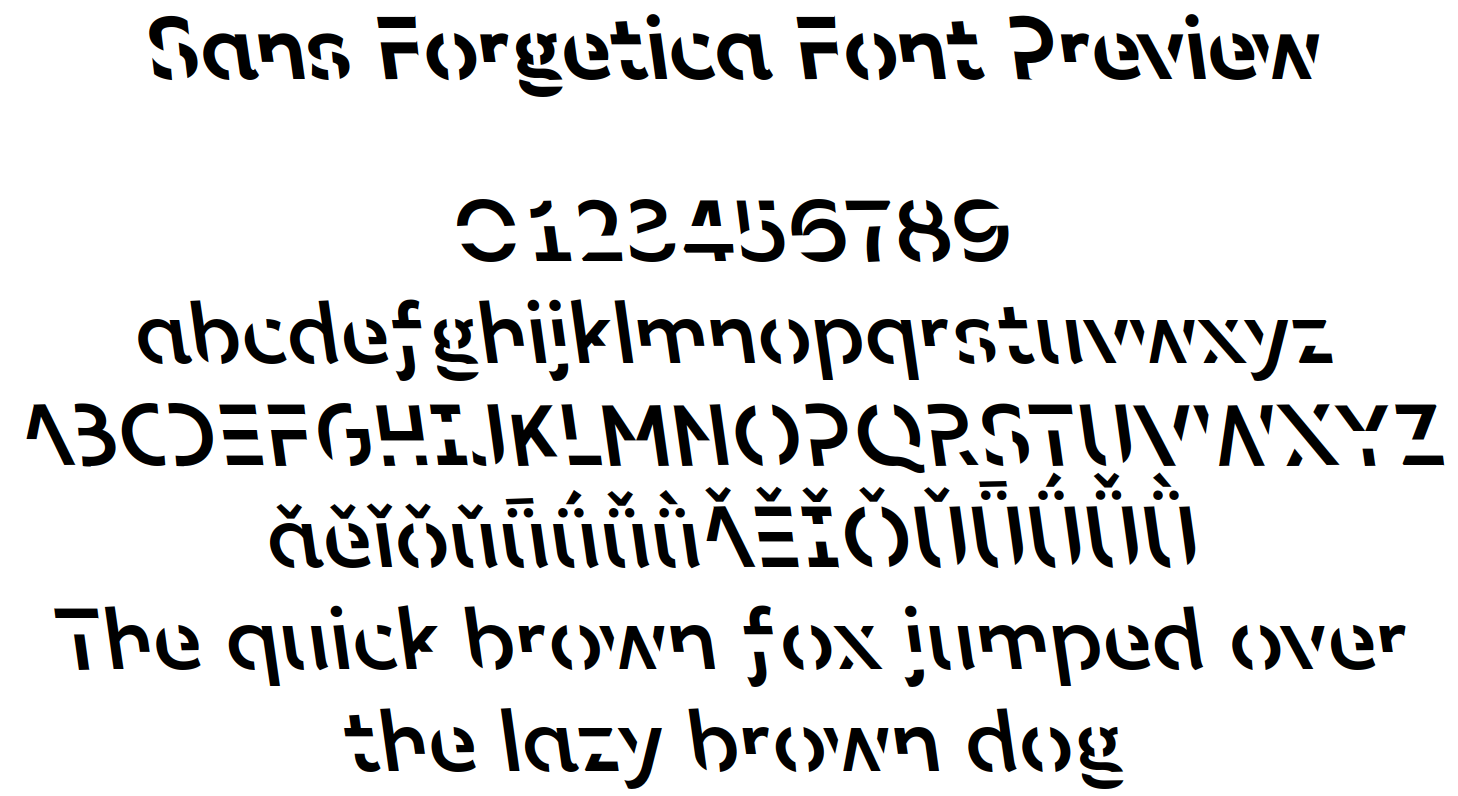Fork of the Sans Forgetica font designed using principles of cognitive psychology to help better remember study notes. Download the latest stable version from the releases page.
- v1.002: Support for Chinese hànyǔ pīnyīn characters such as: ǎěǐǒǔǖǘǚǜǍĚǏǑǓǕǗǙǛ
Please see the CHANGELOG.md for additional details
-
Download the latest
SansForgetica-Regular.otffont from the releases page. -
Open the
SansForgetica-Regular.otffile withgnome-font-vieweror the font viewer of your choice. -
Click the Install button.
# List font path
fc-list "Sans Forgetica"
# remove font
sudo rm ~/.local/share/fonts/SansForgetica-Regular.otf
# clear font cache
fc-cache -fv
Based on instructions from Anki Web Styling: Installing Fonts and Anki Web File Locations.
-
Go to your Anki folder:
cd ~/.local/share/Anki2 -
Go into the folder called "User 1" (or your profile name if you’ve renamed/added profiles or use a different language).
-
Download
SansForgetica-Regular.ttffrom the releases page and copy it into thecollection.mediafolder within the "User 1" folder:cp ~/Downloads/SansForgetica-Regular.otf ~/.local/share/Anki2/User\ 1/collection.media/
-
Go to your Anki folder: navigate to
%APPDATA%\Anki2using Windows Explorer. -
Go into the folder called "User 1" (or your profile name if you’ve renamed/added profiles or use a different language).
-
Download
SansForgetica-Regular.ttffrom the releases page and copy it into thecollection.mediafolder.
Based on instructions from Anki Web Styling: Installing Fonts.
-
Determine the root AnkiDroid directory specified under Settings > Advanced > AnkiDroid directory. For me, this was
/storage/emulated/0/AnkiDroid -
Rename your font so that you remove all whitespace (eg: replace spaces " " with dashes "-") and add an underscore ("_") at the front of the font name. For example,
SansForgetica Regular.ttfshould become_SansForgetica-Regular.ttf. The underscore ("_") prefix avoids annoying check media messages. Note thatcollection.mediaonly supports.ttffonts,.otffonts are no longer supported. -
Download
SansForgetica-Regular.ttffrom the releases page and copy it into thecollection.mediafolder under the root AnkiDroid directory (for me, this was/storage/emulated/0/AnkiDroid/collection.media). If you have adb installed on your computer, you can use the following command:adb push SansForgetica-Regular.ttf /storage/emulated/0/AnkiDroid/collection.media/_SansForgetica-Regular.ttf, otherwise you can use a something like Amaze Filemanager on your Android device to copy the font to thecollection.mediafolder.
If you have existing Anki decks, you also need to update their templates:
-
Click Add at the top of the main screen, and then select the note type you want to change with the top left button.
-
Click Cards.
-
In the styling section, add the following text to the bottom (after the last "}" character):
@font-face { font-family: myfont; src: url("_SansForgetica-Regular.ttf"); }
Applying the style to every card is very time-consuming, but there are ways to generate decks programmatically with GenAnki and similar libraries which avoid this problem. Basically, you can define your deck as a tab-separated file, and then generate the deck using some Python code, applying the font via a CSS style rule.
Sans Forgetica is licensed under the Creative Commons Attribution-NonCommercial License (CC BY-NC). This was the license provided by RMIT University, therefore I do not have the freedom to change it.
If you would like to add new glyphs or modify existing ones, please send a pull request with the modified FontForge .sfd (preferred), .otf, or .ttf file and a screenshot of the FontForge glyphs with your changes, as well as a screenshot of sans-forgetica-font-preview.html with your new/modified characters rendered in the browser of your choice. Thank you!
The Sans Forgetica font was created by Melbourne’s RMIT University: news release.
Since the original sansforgetica.rmit website is no longer available, I downloaded the font files from 1001 Fonts.
The fonts were edited using FontForge, an Open Source Font Editor.
